The National Gallery of Art presents
Photography and the Black Arts Movement, 1955–1985, an exhibition exploring the work of American and Afro-Atlantic diaspora photographers in developing and fostering a distinctly Black visual culture and identity. The first presentation to investigate photography's role in the Black Arts Movement, a creative initiative comparable to the Harlem Renaissance in its scope and impact, which evolved concurrently to the civil rights and international freedom movements, the exhibition reveals how artists developed strategies to engage communities and encourage self-representation in media, laying a foundation for socially engaged art practices that continue today. Photography and the Black Arts Movement will be on view in the West Building from September 21, 2025, to January 11, 2026, before traveling to California and Mississippi.
Photography and the Black Arts Movement brings together approximately 150 works spanning photography, video, collage, painting, installation, and other photo-based media, some of which have rarely or never been on view. Among the over 100 artists included in the exhibition are Billy Abernathy (Fundi), Romare Bearden, Dawoud Bey, Frank Bowling, Kwame Brathwaite, Roy DeCarava, Louis Draper, David C. Driskell, Charles Gaines, James E. Hinton, Danny Lyon, Gordon Parks, Adrian Piper, Nellie Mae Rowe, Betye Saar, Raymond Saunders, Jamel Shabazz, Lorna Simpson, and Carrie Mae Weems.
This expansive selection of work showcases the broad cultural exchange between writers, musicians, photographers, filmmakers, and other visual artists of many backgrounds, who came together during the turbulent decades of the mid-20th century to grapple with social and political changes, the pursuit of civil rights, and the emergence of the Pan-African movement through art. The exhibition also includes art from Africa, the Caribbean, and Great Britain to contextualize the global engagement with the social, political, and cultural ideas that propelled the Black Arts Movement.
Working on many fronts—literature, poetry, jazz and new music, painting, sculpture, performance, film, and photography—African American artists associated with the Black Arts Movement expressed and exchanged their ideas through publications, organizations, museums, galleries, community centers, theaters, murals, street art, and emerging academic programs. While focusing on African American photography in the United States, the exhibition also includes works by artists from many communities to consider the extensive interchange between North American artists and the African diaspora. The exhibition looks at the important connections between America's focus on civil rights and the emerging cultural movements that enriched the dialog, said Philip Brookman, cocurator of the exhibition and consulting curator of the department of photographs at the National Gallery of Art.
Photography and photographic images were crucial in defining and giving expression to the Black Arts Movement and the civil rights movement. By merging the social concerns and aesthetics of the period, Black artists and photographers were defining a Black aesthetic while expanding conversations around community building and public history, said Deborah Willis, visiting cocurator, university professor and chair of the department of photography and imaging at the Tisch School of the Arts and founding director of the Center for Black Visual Culture at New York University. The artists and their subjects helped to preserve compelling visual responses to this turbulent time and their images reflect their pride and determination.
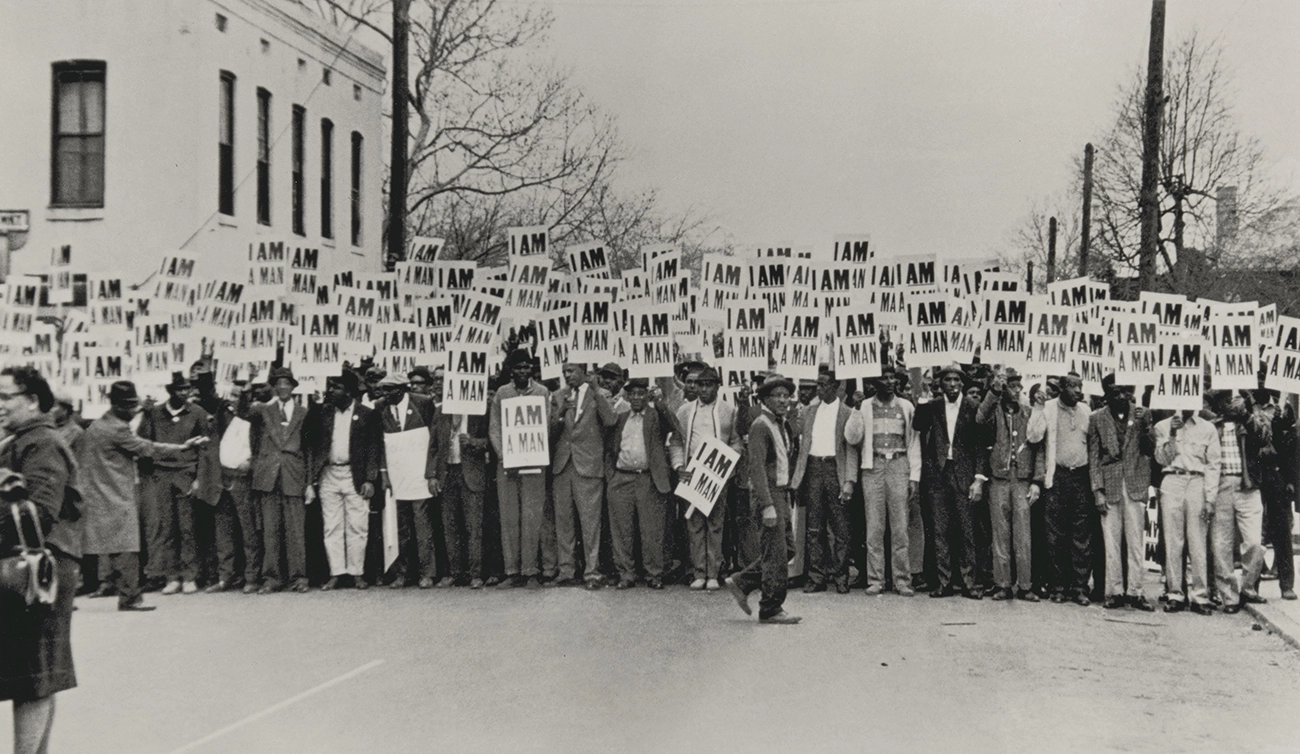
I Am A Man, Sanitation Workers Strike, Memphis, Tennessee, March 28, 1968 © Dr Ernest C. Withers, National Gallery of Art, Alfred H. Moses and Fern M. Schad Fund, 2023.87., Sr. courtesy of the Withers Family Trust
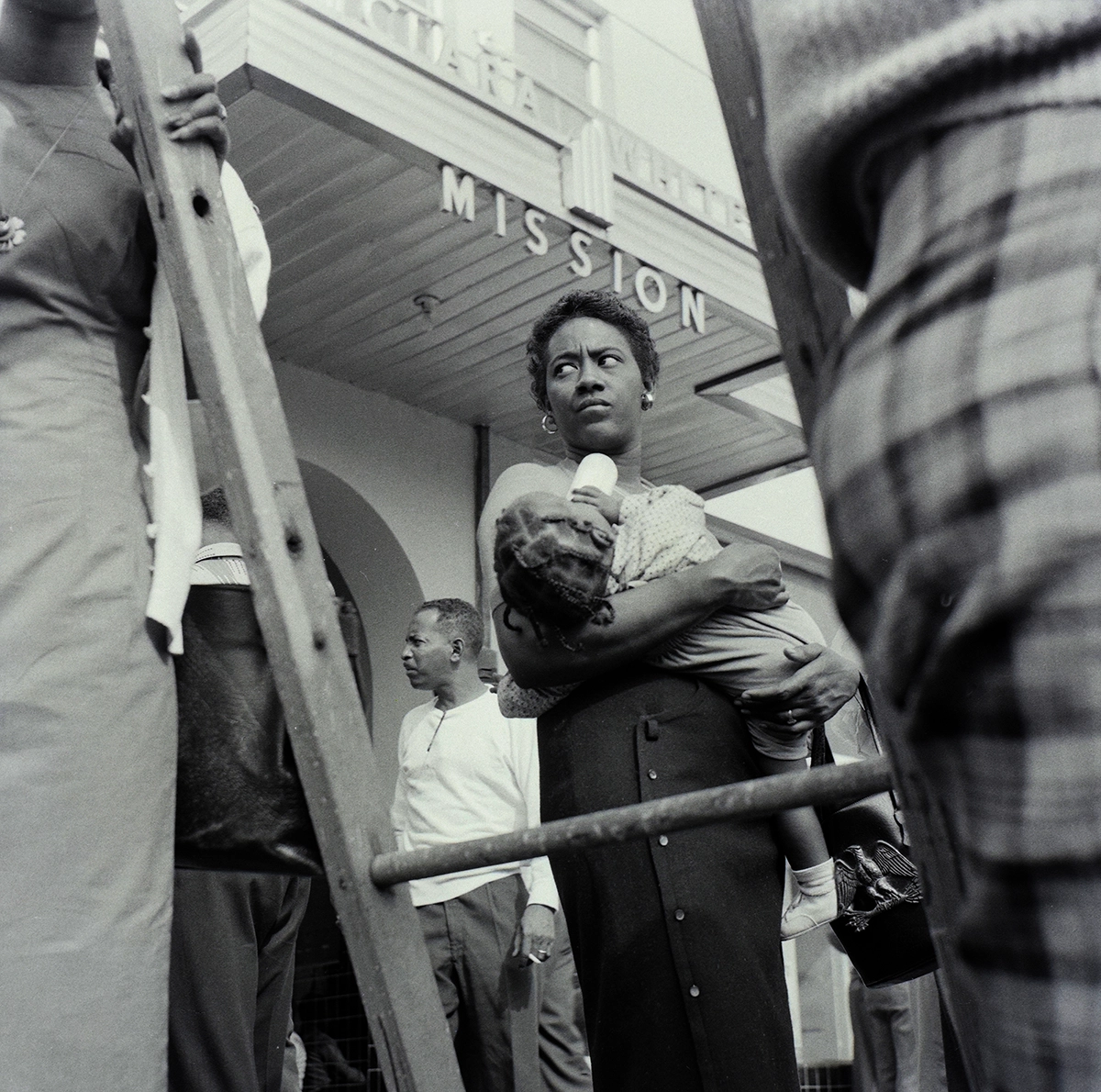
Clara White Mission, Jacksonville, Florida, 1960s, printed 2024 © Cecil J. Williams
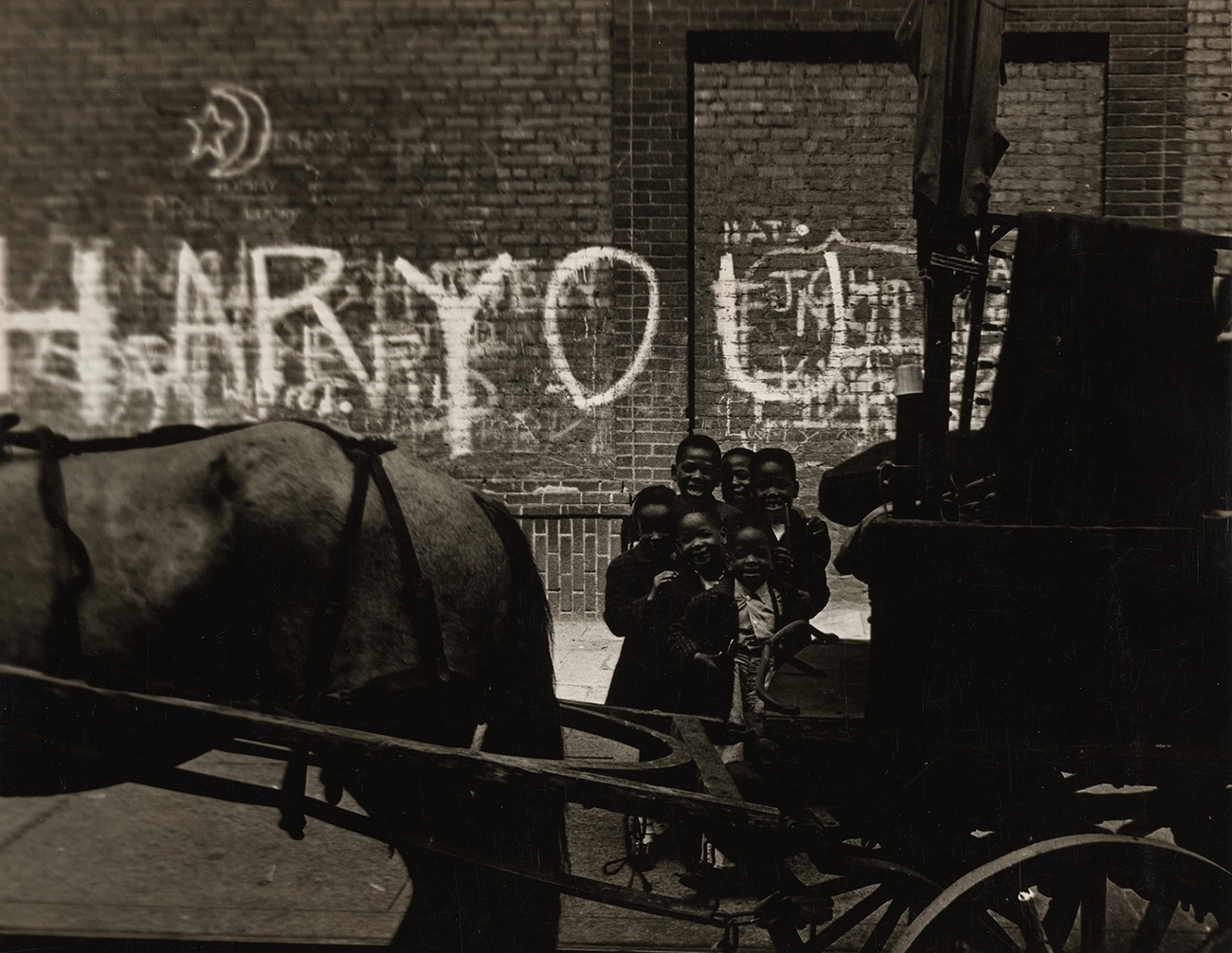
HarYouAct, 115th Street, Harlem, 1963 © Shawn Walker, National Gallery of Art, Pepita Milmore Memorial Fund, 2021.71.4
Drawing in part from the National Gallery's collection—with many newly acquired works—and from lenders in the US, Great Britain, and Canada, the exhibition presents the cultural and political titans of the era spanning 1955–1985, including civil rights leaders, artists, and musicians, as well as everyday people, scenes of daily life, and fashion and commercial photography. Structured around nine thematic sections—including explorations of the self, community, fashion and beauty, the media, and ritual—the exhibition weaves a holistic vision of the period and its cultural impact.
Among the works in the first section of the exhibition is a collage by Romare Bearden, 110th Street Harlem Blues (1972). A dynamic mixture of painted paper and photographs, the work illustrates the ongoing vitality of Harlem's community, echoing the vibrancy and social content of the Harlem Renaissance, which Bearden was exposed to in his early life. Moving into the section titled Picturing the Self / Picturing the Movement, self-portraits by Coreen Simpson, Alex Harsley, and Barkley L. Hendricks underscore a central theme of the exhibition: artists asserting their presence within the broader narrative of the movement and the era, along with the importance of self-representation in their art. A highlight of Representing the Community—a section filled with everyday scenes of people at work and at rest—is Ralph Arnold's Soul Box (1969), a mixed-media assemblage of found objects and collage, serving as a time capsule that captures stories of the Black Arts Movement.
Photographs were a crucial tool used to communicate the events of the civil rights movement to a national audience. Artists and news media understood the power of photographs to address inequality and advocate for civil and human rights, and some works in the exhibition are by photojournalists who captured the speeches, marches, and sit-ins that defined the era. A rarely seen 1965 photograph by Frank Dandridge captures Dr. Martin Luther King Jr. watching President Lyndon B. Johnson's televised address following the Selma, Alabama, marches—events that would ultimately lead to the passage of the Voting Rights Act. Depicting Dr. King in a private, domestic moment, the image underscores not just the personal gravity of the moment but the television's growing role in shaping public understanding of the era's historic events. One of several works featured in the In the News section, it reflects how photographers responded to the shifting landscape of news media—from still photography to the rise of television.
The Black Arts Movement was instrumental in reshaping fashion, advertising, and media as tools of self-representation and cultural empowerment. A Kraft Foods advertisement (1977), photographed by Barbara DuMetz and featuring a young Black girl holding her doll, illustrates how the movement prompted advertisers to engage Black audiences more thoughtfully by hiring Black photographers and models in their campaigns. It is among the highlights of the Fashioning the Self section, along with an editorial photograph by Kwame Brathwaite, the photographer who helped coin the Black is Beautiful movement, and many depictions of women in beauty shops, showing the importance of these spaces to forming identity and community.
The exhibition's concluding section, Transformations in Art and Culture, reflects a shift in the Black Arts Movement's purpose—from its earlier focus on civil rights to a younger generation's engagement with more historical and conceptual ideas, while still drawing on the movement's visual language. Highlights include multimedia and time-based works by Ulysses Jenkins, Charles Gaines, and Lorna Simpson, which explore new and experimental ways to explore Black identity.

Drum Cover Girl Erlin Ibreck, Kilburn, London, 1966, printed 2023 © James Barnor, National Gallery of Art, Alfred H. Moses and Fern M. Schad Fund, 2025.26.3 / Courtesy galerie Clémentine de la Féronnière
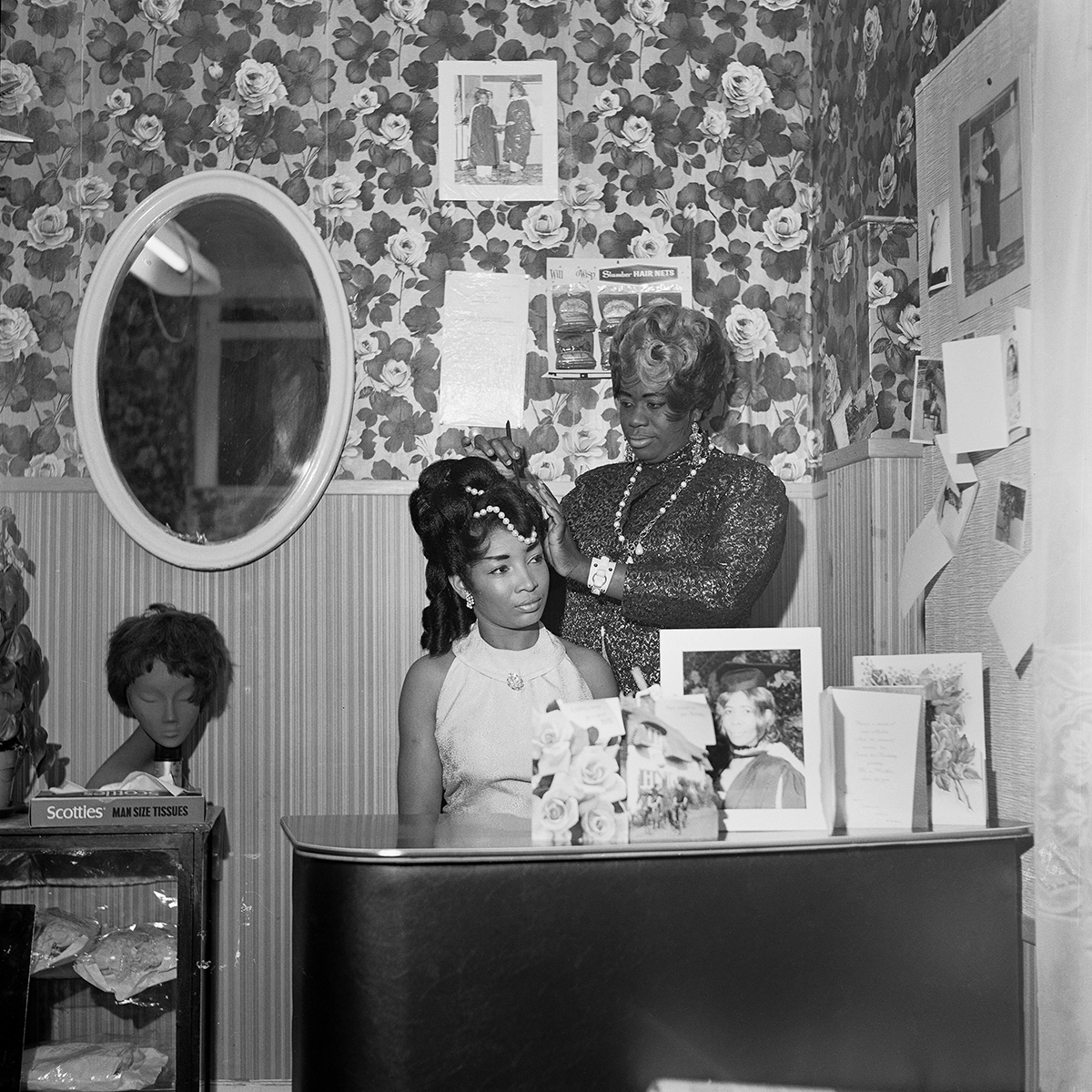
Beauty Salon, London, c. 1960s © Raphael Albert, Collection of Autograph, London
, Washington, September 21, 2025–January 11, 2026
J. Paul Getty Museum, Los Angeles, February 24–June 14, 2026
Mississippi Museum of Art, Jackson, July 25–November 8, 2026
Exhibition Curators
The exhibition is cocurated by Philip Brookman, consulting curator of the department of photographs at the National Gallery of Art, and Deborah Willis, university professor and chair of the department of photography and imaging at the Tisch School of the Arts and director of the Center for Black Visual Culture at New York University.
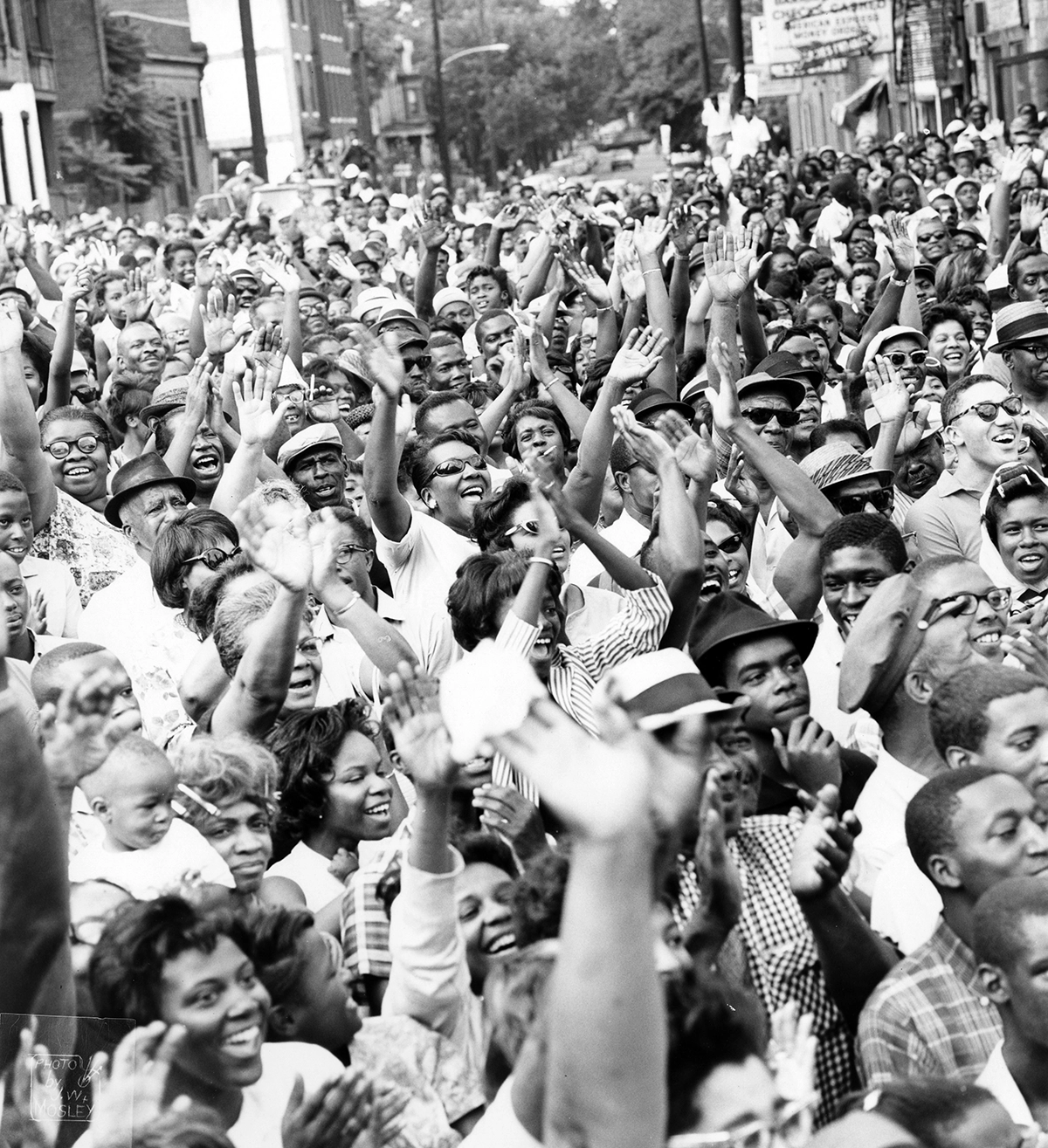
View of the crowd as Dr. Martin Luther King Jr. addresses civil rights demonstrators at 40th Street and Lancaster Avenue, Philadelphia, August 3, 1965 © John W. Mosley, John W. Mosley Photograph Collection, Charles L. Blockson Afro-American Collection, Temple University Libraries
Published in association with
Yale University Press, the fully illustrated catalog accompanying the exhibition examines the vital role photography played in the evolution of the Black Arts Movement, which brought together writers, filmmakers, and artists as they explored ways of using art to advance civil rights and Black self-determination. Edited by Philip Brookman and Deborah Willis, with a preface by Angela Y. Davis and contributions by Makeda Best, Margo Natalie Crawford, Romi Crawford, Cheryl Finley, Sarah Lewis, and Audrey Sands, this book reveals how photographs operated across art, community building, journalism, and political messaging to contribute to the development of a distinctly Black art and culture. Essays by these distinguished scholars focus on topics such as women and the movement, community, activism, and Black photojournalism, and consider the complex connections between American artists and the African diaspora, and the dynamic interchange of Pan-African ideas that propelled the movement.
This publication is supported through a generous grant from Nion McEvoy and Leslie Berriman.
It will be available for purchase in the West Building, East Building, and Concourse Shops and at
shop.nga.gov
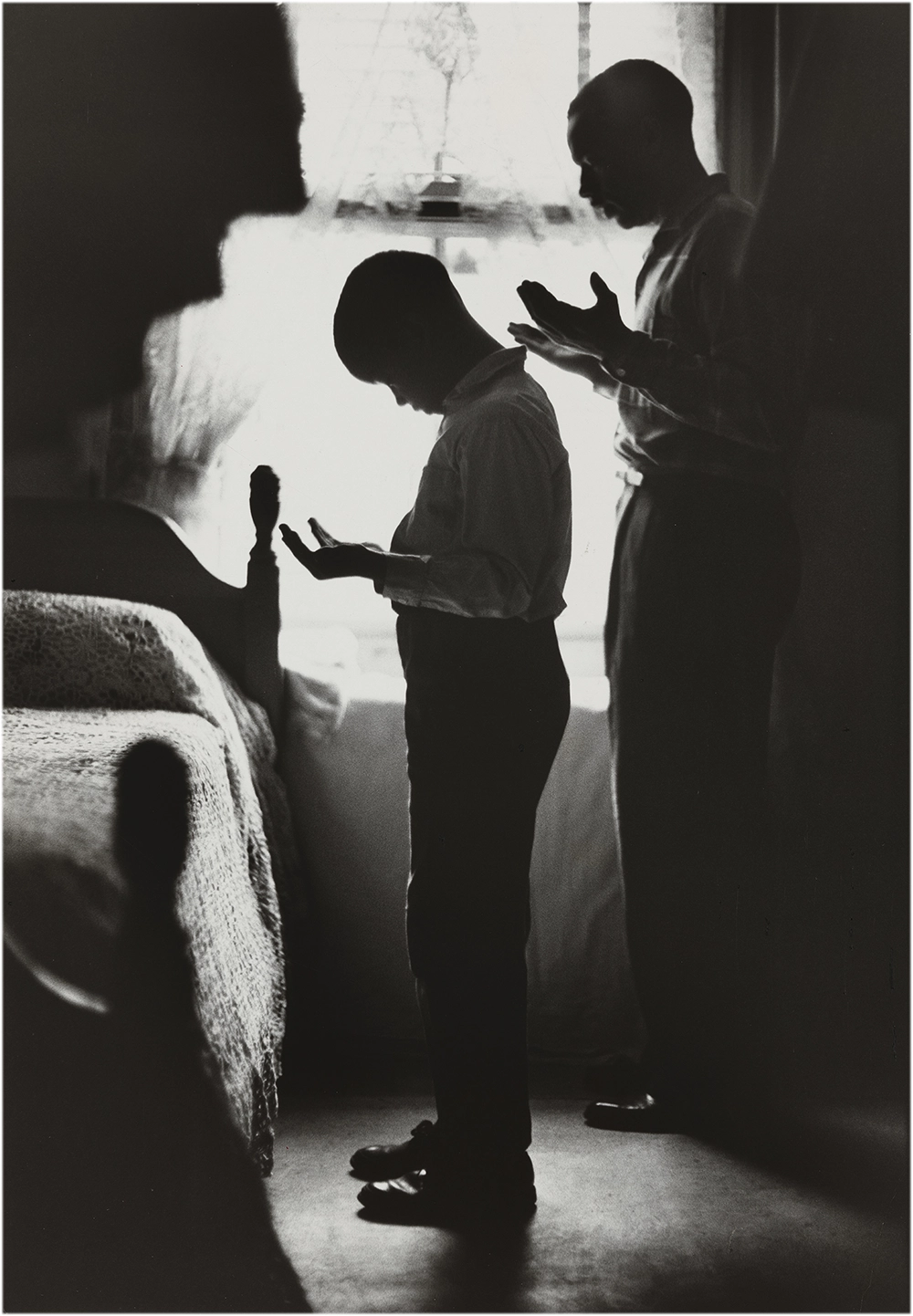
Evening Prayer, Muslim Father and Son, New York, 1963 © Gordon Parks, National Gallery of Art, Corcoran Collection (The Gordon Parks Collection), 2015.19.4632

Two Teenaged Supporters of the Selma March, 1965, printed c. 1970 ©Moneta Sleet Jr., Photo: Made possible by the Ford Foundation, J. Paul Getty Trust, John D. and Catherine T. MacArthur Foundation, The Andrew W. Mellon Foundation, and Smithsonian Institution.









